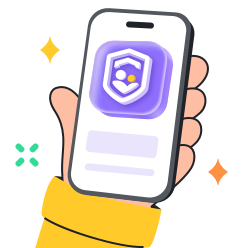At a time when there is increased understanding and discourse regarding identity, the question what is pansexual, has developed into a focal point of debate on human sexuality. With society breaking out of the binary conceptualizations of gender and sexuality, new labels such as pansexual give us a broader way of encompassing varying attractions within society. The post will examine what pansexuality is, the misunderstandings around pansexuality, and the reasons why the concept of pansexuality has gained increased prominence today.
What is pansexual?
So what is pansexual? Pansexuality is sexual, romantic, or emotional attraction towards individuals irrespective of their gender identities or biological sexes. Pansexuals do not follow traditional classifications of gender for their attractions. They can be attracted to anybody on the gender spectrum, including those who are nonbinary or agendered. This view has been referred to as being gender-blind, in that it is personality and connection that are more important than gender.



The word pansexual has its roots back in the early twentieth century. The prefix pan- was derived out of a Greek word meaning all. Sigmund Freud popularized the term, pansexualism, to theorise that sexual instinct is a major driving force behind most human behaviour. Since then the term has gradually transformed and is now used to refer to attraction that is not restricted by gender.
What is the difference between pansexuality and bisexuality?
Although the terms bisexuality and pansexuality are often used interchangeably or interrelatedly, they mean different things. They are both classified under multisexuals or bi+, i.e. attraction towards more than one gender. Their only distinction, however, is in the role that gender plays in the attraction itself.
Conventionally, bisexuality is the attraction towards two or more sexes. Given that the prefix ” bi- ” signifies two, it was originally used to refer to attraction towards men and women. However, as currently understood, its meaning has grown to be much broader. A number of bisexuals currently also add non-binary, genderqueer and other gender identities to their definition. With pansexuality, as determined, it is an attraction towards individuals irrespective of gender.
Pan- is a Greek word that means all, propagated in the fact that a pansexual individual does not take gender into account when it comes to attraction. However, it is important to note that these definitions are not fixed across board. Various individuals have varying conceptualization and applications of these terms.
Some who are attracted to all genders may still wish to identify as bisexual. This is either because of a personal interest in the bisexual community, or because they believe it is a more familiar label.
Alternatively, individuals who could be regarded as bisexuals could be more inclined to the term pansexual to describe their personal experience of non-gendered attraction. Ultimately, there may be a great deal of overlap. But the most accurate term is the one that a person finds as most descriptive of their own unique experience.
Want to know more about your teens?
Use parental controls to know your teens digital status.
Common misconceptions about pansexuality
While people are becoming increasingly aware of what is pansexual, there still exists lots of misconceptions that may result in misunderstandings and stigma.
Such misconceptions commonly result from oversimplified explanations or gross misunderstanding of what sexual orientation is in the first place.
Misconception 1: Pansexual people are attracted to “everyone”
Possibly the most loomingly widespread myth is that pansexuals are attracted to everyone they meet. This is fundamentally misconstruing attraction. Pansexuality is about the ability to be attracted to someone based on more than gender. It is not about being attracted to everyone blindly.
Pansexual individuals, just like everybody, have their personal preferences, standards and qualities that they find attractive in prospective partners.
They are attracted to personality, character traits, shared values, and chemistry, same as people of any other orientation.
Misconception 2: Pansexuality is a phase or trend
Some people do not see pansexuality as a genuine identity but as a phase or trend, among the younger generation.
Such negative stereotyping negates real experiences and identities. While the term has recently become more visible, the idea of it is not new.
Pansexual is a term that has been in existence since the 1800s. And through out history, individuals have been getting attracted irrespective of gender.
The growing popularization of the term does not reflect an overnight invention. It is a sign of a more open society and a more self-aware population of many different identities.
Misconception 3: Pansexual people are more promiscuous
There is a false stereotype that pansexuals are more sexual or promiscuous because they can find someone of any gender attractive.
This myth confuses the diversity of possible attraction with an actual behavior.
The extent to which people engage in sexual activity differs regardless of orientation. Being pansexual does not imply that they have more sexual partners or are more promiscious.
Misconception 4: Pansexuality includes attraction to children, animals, or objects
This is a very damaging misconception based upon the misunderstanding of the prefix “pan-” (meaning “all”).
The term Pansexuality is confined just to the attraction between adults of any gender identity. It has nothing to do whatsoever with improper attraction to children, animals or objects.
Such a misleading connection is wrong not only because it is inaccurate. But also because it contributes to the development of dangerous stereotypes, that affects the LGBTQ + community negatively.
Misconception 5: Pansexual people can’t be satisfied in monogamous relationships
There is the opinion that, since pansexuals may be attracted to any gender, they are incapable of being satisfied with a single partner.
This is based on the assumption that, the wider variety of potential attractions that one has, the more partners they will need. This is not true.
Most pansexuals are happy, in long-term monogamous relationships and are totally satisfied by a single partner irrespective of their gender.
Why is pansexuality becoming more recognized?
The increasing recognition of pansexuality is part of a larger cultural shift to looser and more open ways of perceiving and defining identity.
Such greater visibility can be explained by a number of factors.
Social media and online communities
The internet and especially social media websites, such as Tumblr, Twitter, and Tik Tok, have been key in the normalization of different sexual and gender identities.
These sites offer individuals an opportunity to share their personal experiences, meet others who share their experiences and form communities regardless of geographical location.
To a lot of young people, it is on social media where they were exposed to and introduced to terms such as pansexual first. And as such, it has becomes an everyday vocabulary to them.
Pop culture and media representation
Over the past few years, pansexual characters have become much more common in tv shows, movies and music.
Such characters as David Rose (Schitts creek), and Ola (Sex education) have given more subtle and obvious screen representations of pansexuals.
Moreover, the fact that celebrities, including Miley Cyrus, Janelle Monae, and Demi Lovato have come out as pansexual, has made the term more present in mainstream discourse.
Greater societal awareness
Discussions on gender and sexuality have also taken more advanced forms, not just limited to whether one is gay or straight.
Just as society is becoming more aware of gender spectrums and that gender is a complicated, individualistic identity, so has the language that we use to discuss attraction.
Pansexuality is an all-encompassing term for those whose attraction is not dependent on gender. This, is perfectly in line with the society’s expanded view of human identity.
Such awareness is a product of grassroots activism together with an increased focus on diversity and inclusion at schools and workplaces.
How should parents talk to kids about sexuality?
When a child starts to ask questions regarding identity and relationships, it presents an ideal moment for parents to promote the culture of trust and open communication.
Here are some pointers on how one should proceed with such crucial discussions.
Start early and keep it age-appropriate
Don’t wait until there is a crisis to talk. Begin with easy, child friendly discussions.
When a little kid inquires about a family having two dads, you can just reply, “Families are composed of people who love each other. Some of them have a mom and a dad, some have two dads, and some have two moms.”
When they get older, you can then introduce more complicated notions, such as what is pansexual. As well as the full range of different sexual and gender identities.
Emphasize unconditional acceptance
Make sure your child understand that your love and acceptance is not based on their identity. Make them feel comfortable, that whoever they are, and whoever they love, you will still support them.
This parental support and unconditional love is very important for their mental health and well-being.
By proving to them that you are willing to talk through everything, it makes them feel comfortable to approach you with questions or concerns.
Use the correct terminology
Using the right language in a correct and polite way means you are actually paying attention to what they say and take them seriously.
When they have questions like, what does it mean to be pansexual? Answer them using the right definition; attraction to individuals irrespective of gender.
This normalizes the subject to them, and proves that you are an authoritative source of information.
Introduce parental controls as a supportive tool
To supplement open discussions on sexuality, such as what is pansexual, parents can employ the use of tools such as FlashGet Kids to safeguard kids against the vices of the internet. FlashGet Kids is a parental control application that helps supervise children’s internet activity. While also providing a safe internet experience without suppressing their curiosity. The application is equipped with multiple in-depth tools that facilitate healthy digital growth, preserving family trust and communication.
These features include some of the following.
- Browser Safety. With FlashGet Kids, you can block and filter out dangerous websites to ensure your child is not exposed to improper, explicit sites.
- Screen Time. You can limit the number of hours that your kid can spend using apps and devices. This encourages maintaining a proper balance between virtual and real life.
- Screen Mirroring. This feature will help you see what your child is watching in real-time. It gives you a chance to step in and offer them advice should they be exposed to anything distressing.
- Usage Reports. FlashGet Kids will also offer detailed usage reports so that you can understand the apps and websites your child accesses. This can be an excellent ice breaker and you can ask “Hey, I saw you were interested in this. What have you learned?”
It is important to present these controls of FlashGet Kids as a way to support, not as a punishment. They are a safety precaution, just as a seatbelt is in a vehicle.
Explain to your child the reasons for using these tools and engage your child in placing the settings.
As they grow and show responsibility, you can ease off some of the controls and give them more independence.
This model of open communication and supportive controls helps children make the right decisions online.
Conclusion
Understanding what is pansexual is key to understanding sexual orientations, which includes attraction not limited to traditional gender considerations. Notably, the term pansexual’s growing visibility is a result of increased social awereness, social media impact, and increased exposure in media and society.
Welcoming this visibility would result in greater acceptance, breaking down misconceptions and creating a more inclusive world where everyone can be their true self.
For parents, talking to children about what is pansexual plants seeds of acceptance and early understanding. Tools such as FlashGet Kids will help make the process safe.

